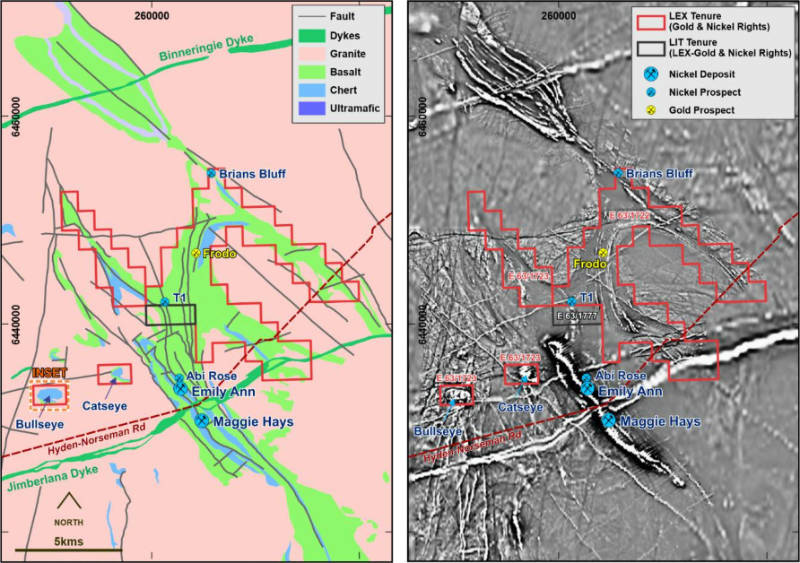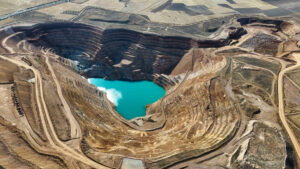Lefroy has nickel in its sights with Bullseye drilling

Lefroy is going for the nickel bullseye at Lake Johnston. Pic: Getty Images
Special Report: Lefroy has kicked off its foray into nickel exploration at the Lake Johnston project in WA with a 30-hole aircore drilling program at the Bullseye target.
Bullseye is a 2.5km wide ovoid-shaped high amplitude aeromagnetic feature where historical wide-spaced drilling on its southern margin returned promising shallow intersections such as 18m at 0.46 per cent nickel from 20m and 9m at 0.48 per cent nickel.
Reinterpretation of the drilling and geophysical data by Lefroy Exploration (ASX:LEX) suggests the broad magnetic feature may represent a buried mafic or ultramafic intrusion that has potential to host nickel sulphide mineralisation.
Drilling is expected to take five days to complete and will consist of two traverses on the existing drill lines to determine the basement geology and multi-element geochemistry.
The company expects to receive results in late January.
“We have been compiling and reviewing the old drilling at Bullseye for some time and intrigued by the coincident magnetic feature and previous nickel intercepts from 1997 that were never followed up,” managing director Wade Johnson said.
“The first pass 30-hole drill program will validate the previous drill results and better understand the basement geology to support an improved understanding of the magnetic anomaly.
“Bullseye adds to the growing pipeline of early-stage generative drill targets the company continues to develop across its tenement portfolio and we eagerly await the results from this phase of drilling.”
Lake Johnston nickel
Lake Johnston is a large tenement package covering more than 250sqkm that consists of two exploration licences held by Lefroy along with the gold and nickel rights on a third licence held by Lithium Australia (ASX:LIT).

Bullseye was recognised by two previous explorers that interpreted it to be a raft of greenstone.
Samantha exploration drilled a single north-south line of holes but did not analyse for nickel while Goldfields Exploration drilled a single east-west line near the southern margin of the magnetic anomaly that intersected promising nickel values that was never followed up.
Lefroy’s re-evaluation of Bullseye involved data compilation, ground reconnaissance and integration with geophysical data sets that highlighted an alternative model to explain the distinctive aeromagnetic feature.
It interprets the anomaly to be a mafic or ultramafic intrusive body, which can be a large host for nickel-copper sulphide mineralisation that occur as basal accumulations in embayments on or near the basal margins of the intrusion.
Besides Bullseye, initial interpretation of geophysical data covering the northern portion of the Lake Johnston greenstone belt, which hosts Poseidon Nickel’s (ASX:POS) Emily Ann and Maggie Hayes deposits, has also outlined a large gravity anomaly at Mt Day.
This article was developed in collaboration with Lefroy Exploration, a Stockhead advertiser at the time of publishing.
This article does not constitute financial product advice. You should consider obtaining independent advice before making any financial decisions.

UNLOCK INSIGHTS
Discover the untold stories of emerging ASX stocks.
Daily news and expert analysis, it's free to subscribe.
By proceeding, you confirm you understand that we handle personal information in accordance with our Privacy Policy.








